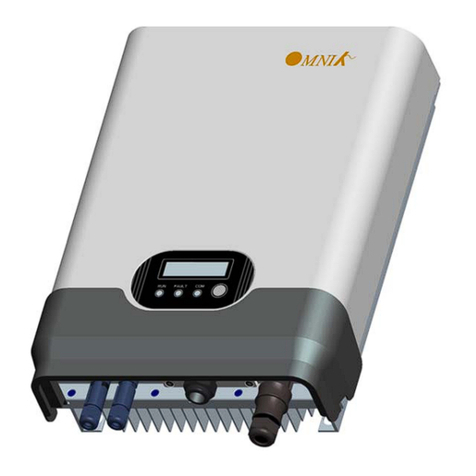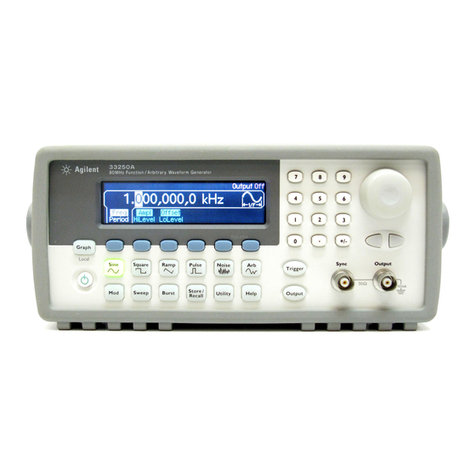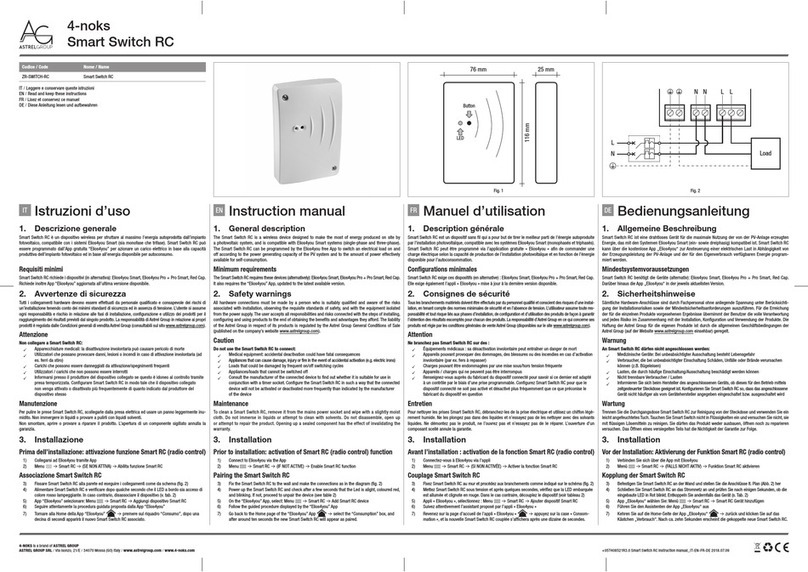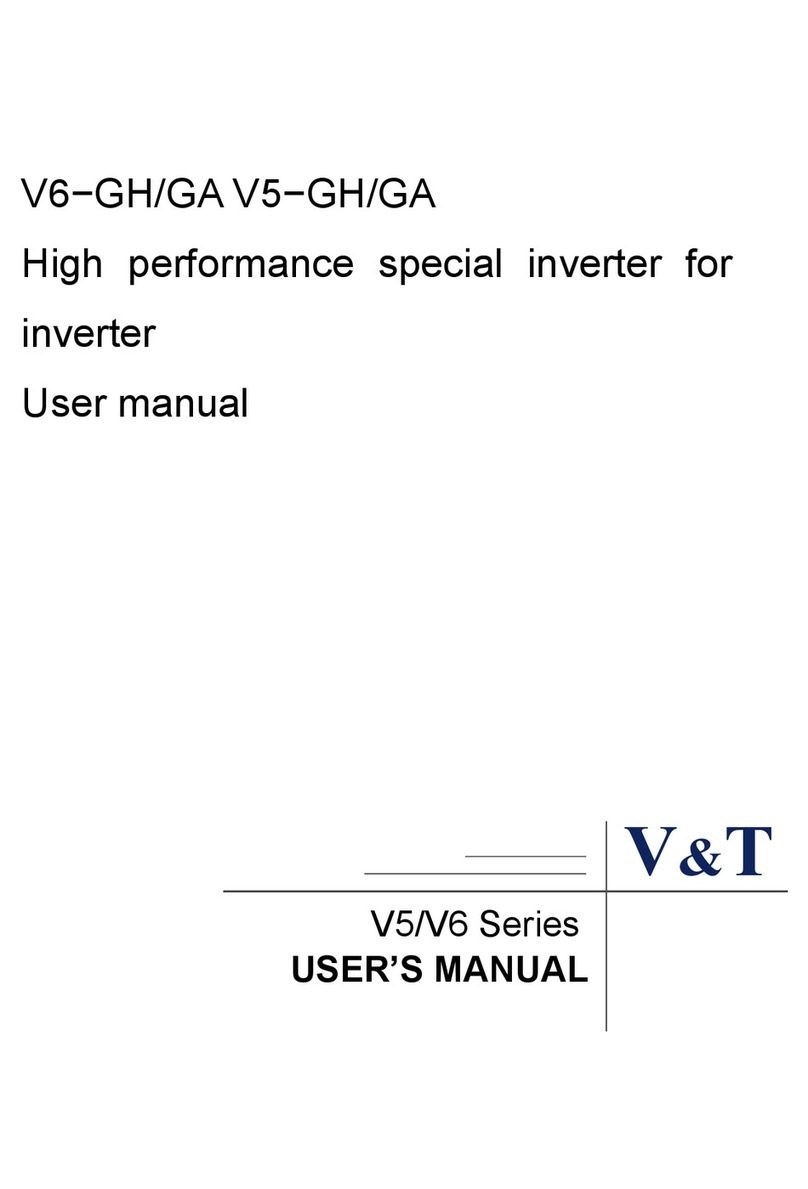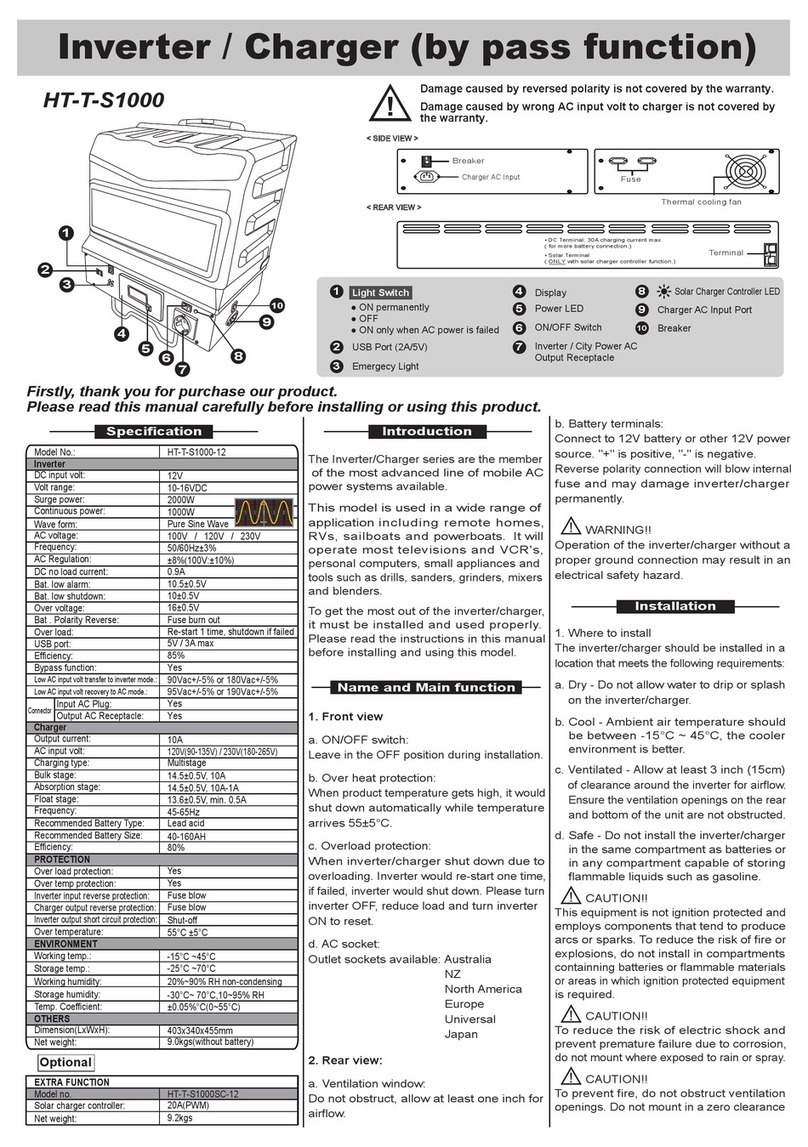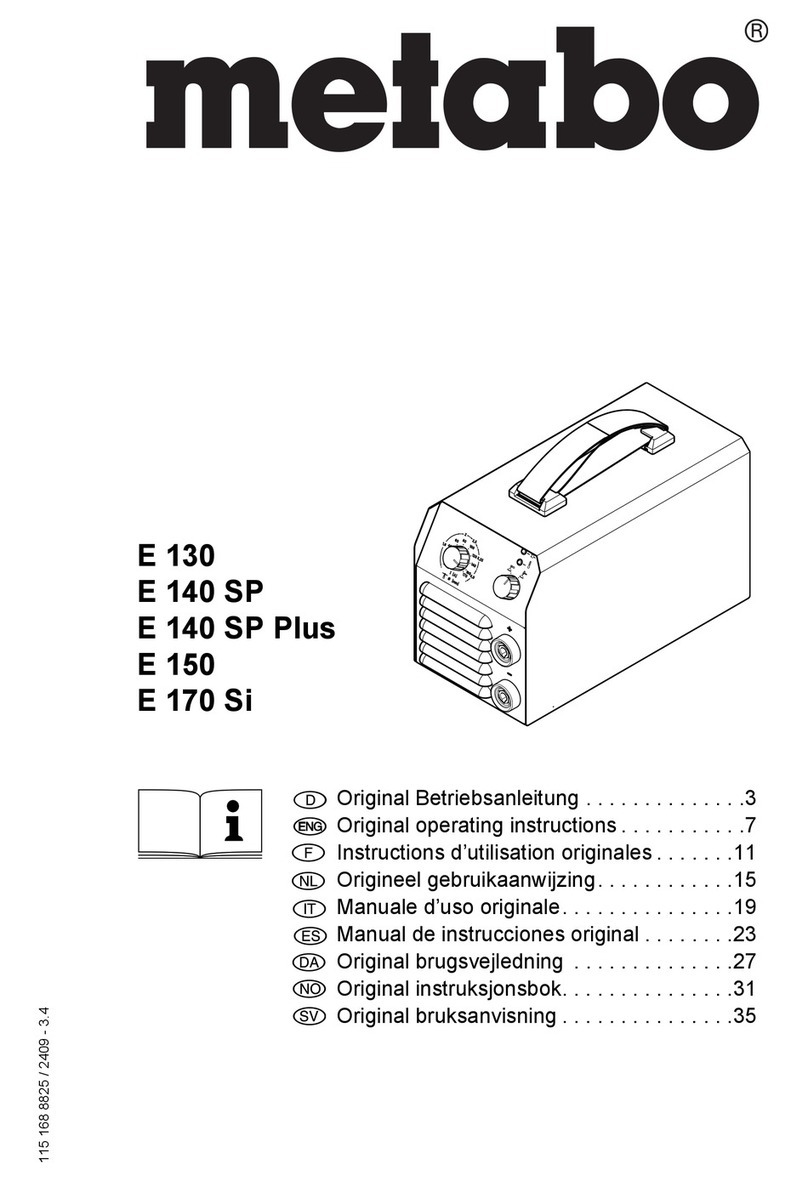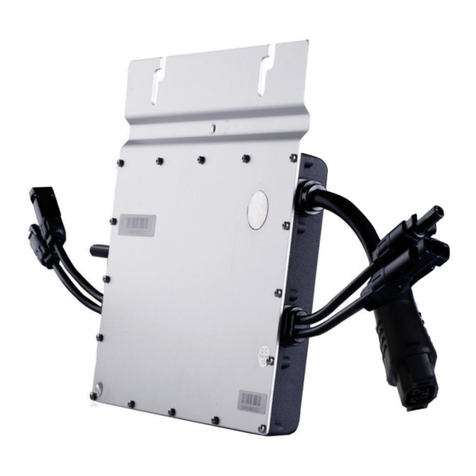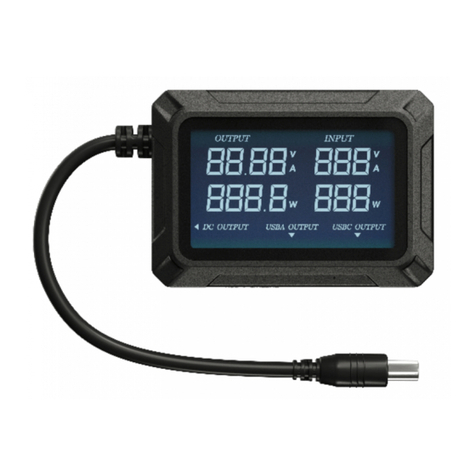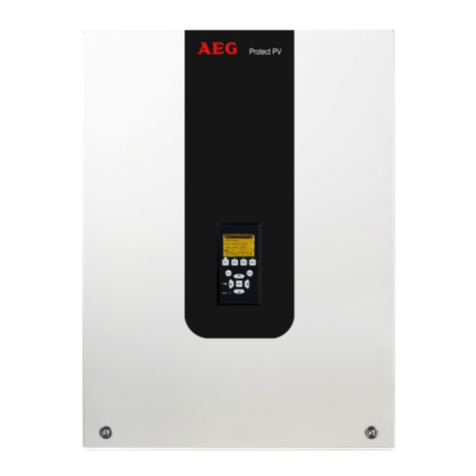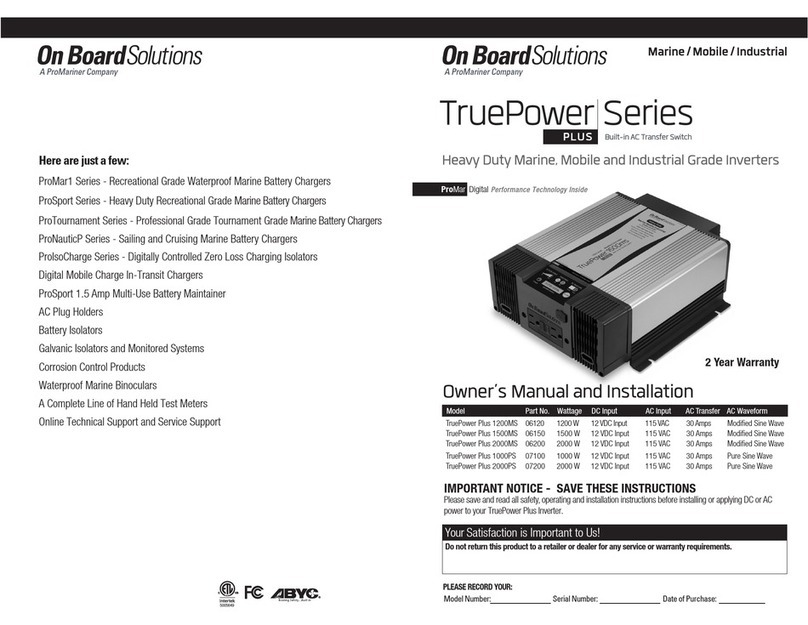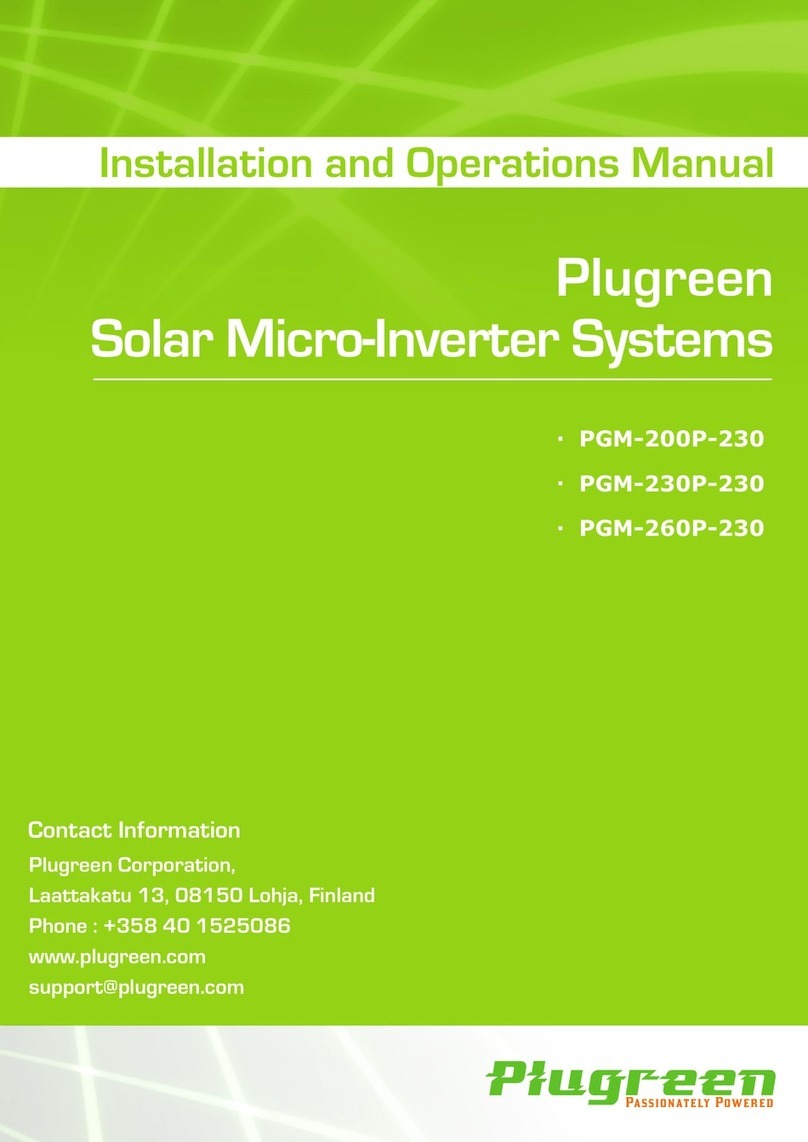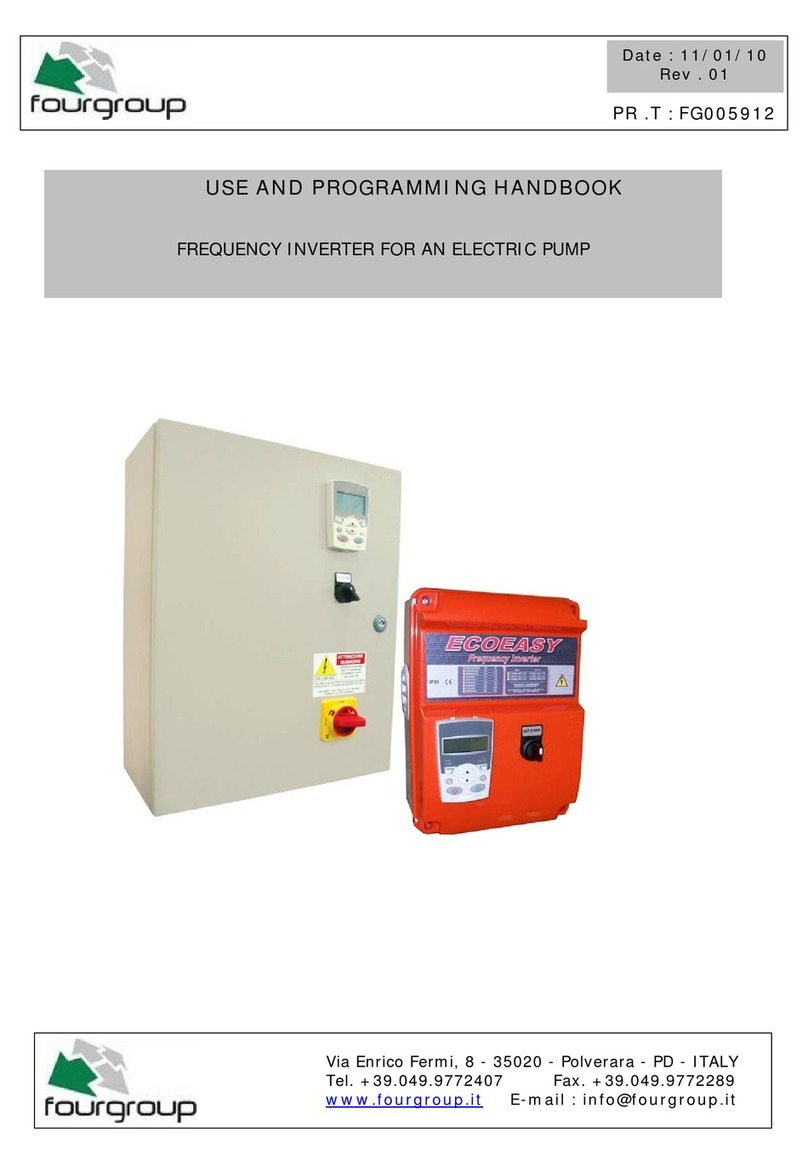SEG SOLAR SEG-6PA-XXXWW User manual

SEG SOLAR PHOTOVOLTAIC MODULE
ADD:
T: 925-468-4198
2022 V1.0
SEG SOLAR INC. (SEG)
SEG Headquarter California office:
6200 Stoneridge Mall Rd., Ste 300 Pleasanton, CA 94588
SEG San Antonio, Texas office:
973 Isom Road San Antonio, TX 78216
www.segsolar.com
:BEW

UL INSTALLATION GUIDE
FOR
SEG SOLAR PHOTOVOLTAIC MODULE
1
1 PURPOSE OF THIS GUIDE
1.1 APPLICABLE PRODUCTS
2 SAFETY
2.1 GENERAL SAFETY
2.2 HANDLING SAFETY
2.3 INSTALLATION SAFETY
2.4 FIRE SAFETY
3 PRODUCT IDENTIFICATION
4 MECHANICAL INSTALLATION
4.1 GENERAL INSTALLATION PRINCIPLE
4.2 LOCATION AND ANGLE SELECTION
4.3 SCREW INSTALLATION
4.4 CLAMP INSTALLATION
4.5 ELECTRICAL INSTALLATION
4.6 GROUNDING
5 MAINTENANCE
6 PARAMETERS
2
2
2
2
3
4
5
5
6
6
6
7
8
12
13
14
14

23
Thank you for choosing SEG Solar Photovoltaic Modules (hereafter referred to
raloSGESylppaotwohnonoitamrofnievigotsiediuGsihT,)”seludoMVP“sa
PV modules properly.
Installers must read and understand this Guide prior to installation. For any
questions, please contact our technical department (technic@segsolar.com)
for further information. Installers should follow all safety precautions describ-
ed in this Guide as well as local codes when installing a module.
Keep this Guide For future reference (care and maintenance) and in the event
of sale or disposal of the PV modules.
This document is applicable to the following PV modules:
• The PV module is used in systems operating at greater than 50 VDC or 240 W
where general access is anticipated. The PV module iscertified for safety
through UL 1703 and within this application class are also certified to meet the
requirements for fire safety Type 1 or 2.
• The PV modules shall be properly grounded in accordance with the instruc-
tions in this Guide or the requirements of the National Electrical Code.
• Installing PV modules requires specialized skills and knowledge. Installation
should only beperformed byqualified personnel. Electrical connections require
a licensed electrician where applicable according to local code and law (i.e. the
NEC for the USA and CEC for Canada).
•Installers should assume all risk of injury that might occur during installation,
including, but not limited to the risk of electric shock.
• One single PV module may generate more than 30V DCwhen exposed to
direct sunlight. Access to a DC voltage of 30V or more is potentially hazardous.
• PV modules which convert light energy to DC electricalenergy, are designed
for outdoor use and canbe mounted ontheground, rooftop, vehicles or boats,
etc. Proper support structure design is the responsibility of thesystem design
ers and installers.
• Do not use mirrors or other magnifiers to concentrate sunlight onto the PV
modules.
• When installing the PV modules, comply with all local, regional and national
statutory regulations. Obtain a building permit if necessary.
• Only use equipment, connectors, wiring and support frames compatible with
the PV modules.
• Do not lift the PV module by grasping the module’s junction box or
electrical leads.
• Do not stand or step on the PV modules or place heavy objects onto it.
• Do not drop the PV module or allow objects to fall on the PV module.
• Do handle with care when moving, transporting and installing thePV mod-
ules.
• Do not attempt to disassemble thePV modules and do not remove any
attached nameplates or components.
• Do not apply paint or adhesive to the PV module top surface.
• Do not scratch or hit the back sheet.
• Do not clean the modules with chemicals.
GWW GWB GBW GBB
GWW GWB GBW GBB
GWW GWB GBW GBB
GWW GWB GBW GBB
GWW GWB GBW GBB
GWW GWB GBW GBB
GWW GWB GBW GBB
Definitions:
-WW: white back sheet, white frame
-WB: white back sheet, black frame
UL INSTALLATION GUIDE FOR SEG
PHOTOVOLTAIC MODULE
UL INSTALLATION GUIDE FOR SEG
PHOTOVOLTAIC MODULE
-BB: black back sheet, black frame
-BW: black back sheet, white frame
GWW GWB GBW GBB
GG G TB
G TB
G TB
GG
-XXX: Module power -HV: High voltage(1500V)
G WW G WB G BW G BB
GG
Type 6
SEG-BMC-XXXWW、SEG-BMC-XXXWB、SEG-BMC-XXXBW、SEG-BMC-XXXBB
SEG-XXX-BMC、SEG-XXX-BMC-HV、 SEG-XXX-BMC-TB

54
• Do not drill holes in the frame. Thismay reduce the frame mechanical
strength and cause cells to crack due to vibration.
• Do not break the anodized coating of the frame (except for grounding con-
nection), this may cause corrosion of the frame.
• Do not use PV modules with broken glass or torn back sheet which presents
danger of electrical shock.
• Do not handle panels in wet conditions without appropriate protection.
• Do not exposePV module to sunlight until installation to avoid unnecessary
degradation.
• Any module without a frame (laminate) shall not be considered to comply
with the requirements of UL1703 unless the module is mounted with hardware
that has been tested and evaluated with the module under this standard or by
a field Inspection certifying that the installed module complies with the
requirements of UL 1703.
• Installation shall conform with UL standards and Safety Standards for Electri-
cal Installations.
• Do not disconnect under load.
• Do not touch conductive parts of PV modules, such as terminals, which can
result in burns, sparks and lethal shock whether or not the PV module is con-
nected.
• Do not touch the PV module unnecessarily during installation.
• Do not work in the rain, snow or windy conditions.
• Do not expose artificial sunlight to PV modules. Completely cover the PV
module with an opaque material during installation to prevent electricity from
being generated.
• Do not wear metallic rings, watchbands, ear, nose, lip rings or other metallic
objects while installing or troubleshooting.
• Only use insulated tools that are qualified for working on electrical installa-
tions.
• Follow the safety regulations for all other system components, including wire
and cables, connectors, charging regulators, inverters, storage batteries,
rechargeable batteries, etc.
• Under normal outdoor conditions the current and voltagegenerated will
differ from those listed onthedatasheet. Current and short-circuit current
should be multiplied by a factor of 1.25 to determine component ratings.
• Only use connectors compatible with thePV module connectors. Removing
the connectors without prior authorization will invalidate the warranty.
• Do not move installed modules to another location, which may invalidate the
warranty.
Each module has three Barcode stickers and one label which have the same
unique serial no. of each module.
Barcode 1: Laminated into PV modules.
Barcode 2: Sticker on the backside of PV modules.
Barcode 3: Sticker on the middle location of long frame side.
Label: Sticker on the backside of PV modules, contains model no. and specific
information pertaining to the module.
• The fire rating of this module is valid only if this Guide is followed.
• Consult your localauthority for Guidelines and requirements for building or
structural fire safety.
• Do not use PV modules near equipment or in places where flammable gases
may be generated.
• Follow local codes and laws when installing the modules
• Roof construction and installation may affect the fire safety of a building;
Improper installation may create a hazard in the event of a fire.
• Do not install module that is damaged in any way as it canpose a fire or elec
trical shock hazard.
• Do not install modules within 50m of theshoreline
UL INSTALLATION GUIDE FOR SEG
PHOTOVOLTAIC MODULE
UL INSTALLATION GUIDE FOR SEG
PHOTOVOLTAIC MODULE

6 7
• Modules can be installed in both landscape and portrait modes
• The PV modules shall be installed high enough to keep it awayfrom potential
shading, windblown sand, snow and water.
• It is recommended that installation of the PV modules be 30cm away from the
ground to insure adequate ventilation.
• Appropriate installation structure shall be chosen to meet required mechanical
load.
• It is recommended that PV modules be installed with a minimum tilt angle of 10
degrees to facilitate cleaning and washdown.
• It is recommended to maintain minimum 10mm gap between PV modules for ther
mal expansion of materials.
• Install PV modules appropriately according to corresponding mechanical load
needs.
Check the serial No. in the barcode with the packing list whenunpacking. Provide
the PV module serial No. When you need support from SEG SOLAR for a particular
PV module.
It is recommended that PV modules be installed where there is excellent solar inso-
lation. In the Northern Hemisphere, the module should typically face south, and in
the Southern Hemisphere, the modules should typically face north. The mostopti-
mum installation angle varies according to different latitudes and longitudes; please
consult experts with appropriate knowledge background when determining the
installation locations and angles.
Each PV module has 8 mounting holes(shown on drawing 1-1).The downward
mechanical load resistance of module will be different based on the location of
the installation holes used(shown as table 1-1).The module frame must be
attached to a mounting rail using M8 corrosion-proof screws together with
spring washers and flat washers in eight symmetrical locations on the PV
module. The applied torque should be adequate to attach it firmly. The refer
ence torque value for M8 screws is 16~20N*m.
When choosing a site, avoid trees, buildings or obstructions which could cast shad-
-ws on the solar photovoltaic modules. Shading can cause hot spots and loss of out-
-put. Factory fitted bypass diodes will minimize such effect.
Do not install the PV modules near naked flame or flammable materials.
Do not install the PV modules in a location where it would be immersed in
water or constantly exposed to water from a sprinkler or fountain etc.
INSTALLED HOLES USED MECHANICAL LOAD
5400Pa
2400Pa
9
14
8 mounting holes
2400Pa
4 Nextracker holes
xtracker only for 72 type module
(For 166 module&182-BMB)
UL INSTALLATION GUIDE FOR SEG
PHOTOVOLTAIC MODULE
UL INSTALLATION GUIDE FOR SEG
PHOTOVOLTAIC MODULE
-1
-1
This manual suits for next models
48
Table of contents
Popular Inverter manuals by other brands
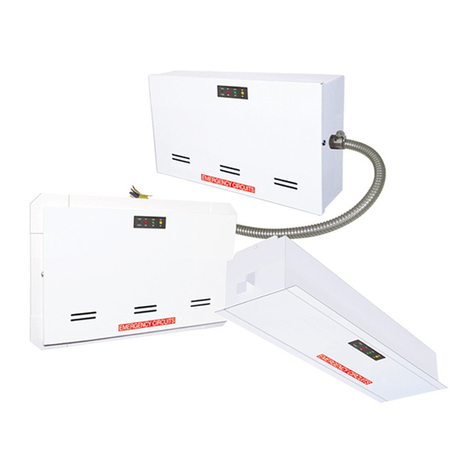
BARRON
BARRON EXITRONIX Tucson Micro Series installation instructions
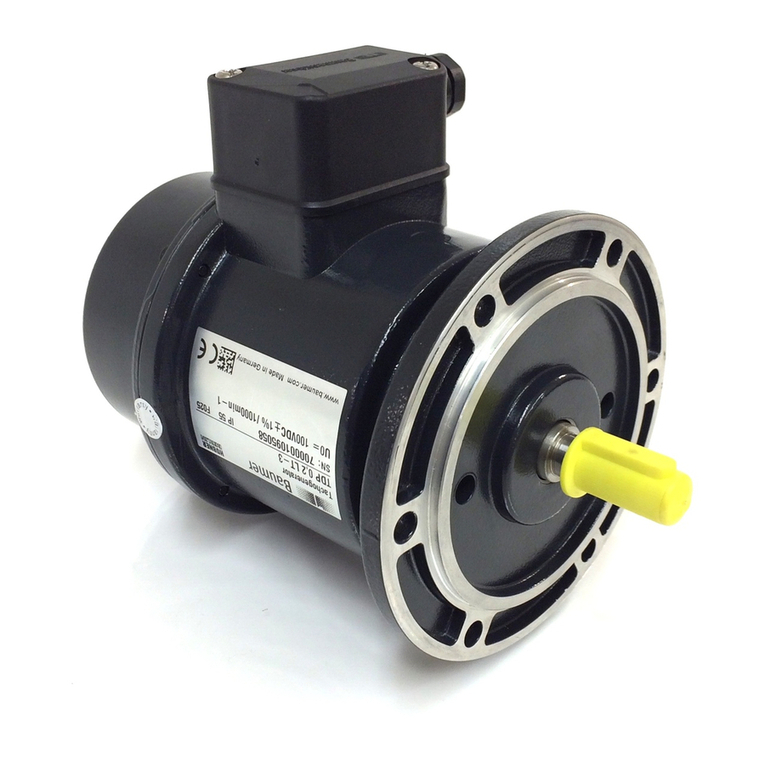
Baumer
Baumer HUBNER TDP 0,2 Series Mounting and operating instructions
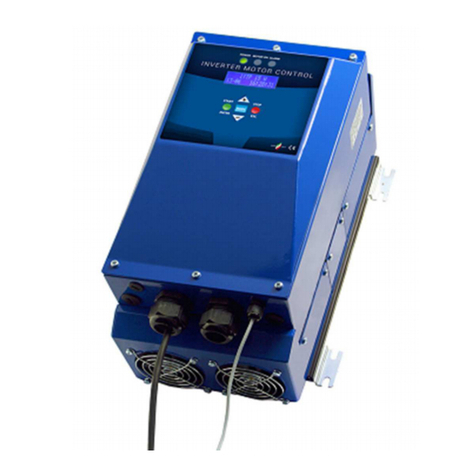
electroil
electroil ITTPD11W-RS-BC Operation and Maintenance Handbook
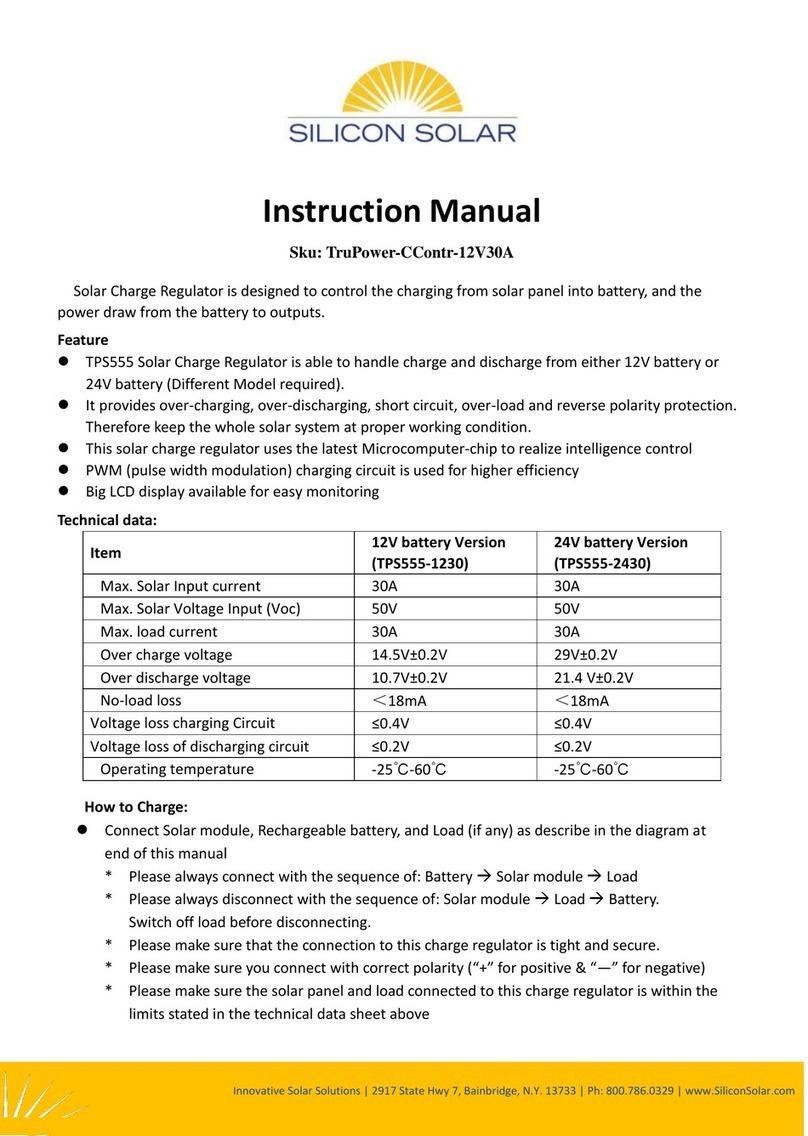
Silicon Solar
Silicon Solar TPS555-1230 instruction manual
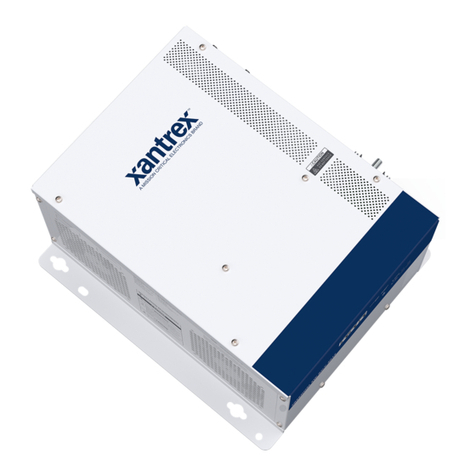
Mission Critical
Mission Critical Xantrex Freedom SW-RVC owner's guide
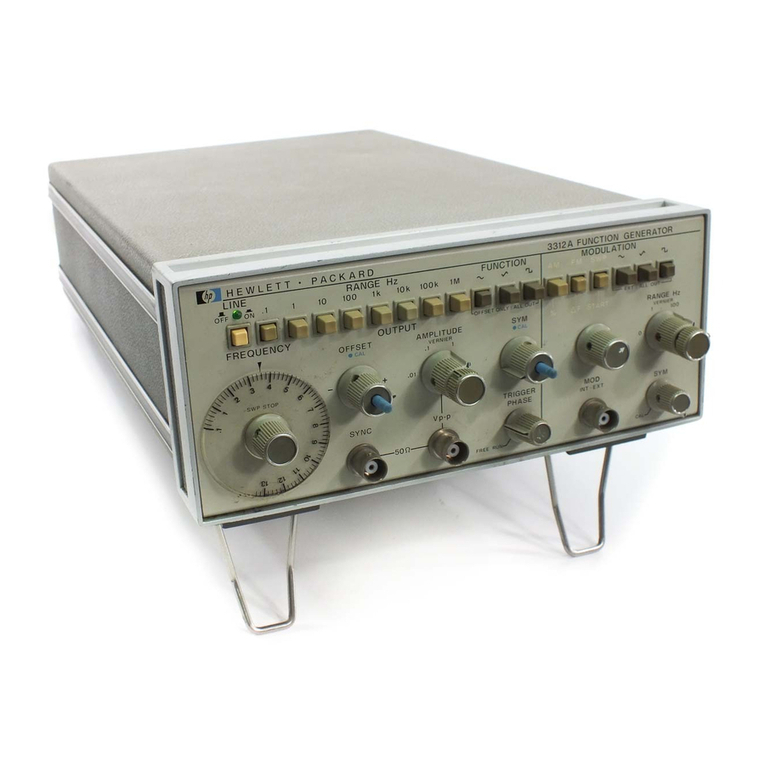
HP
HP 3312A Operating and service manual
